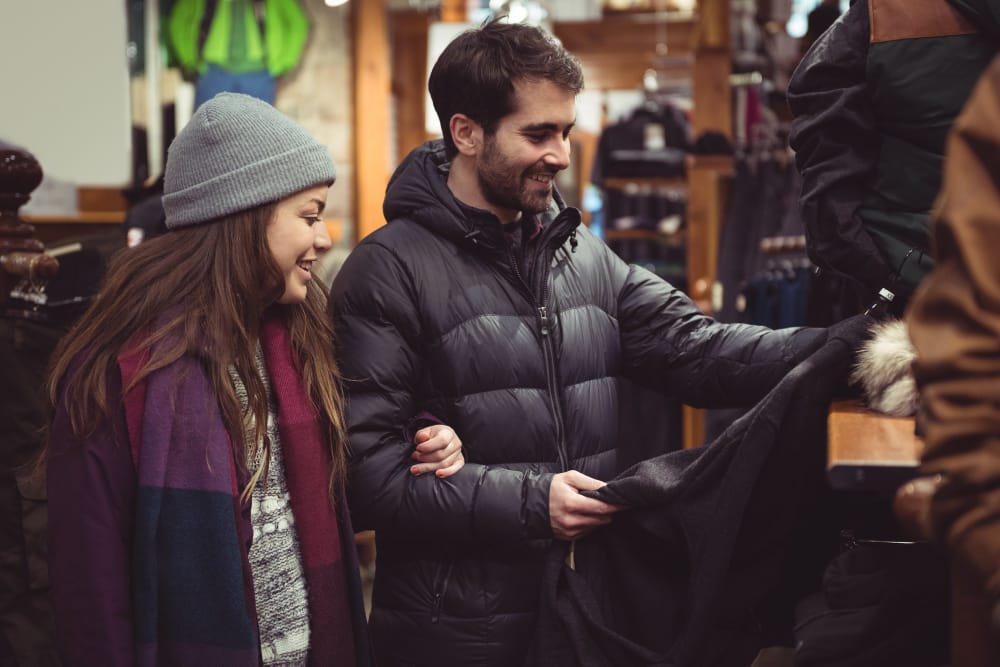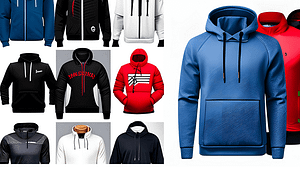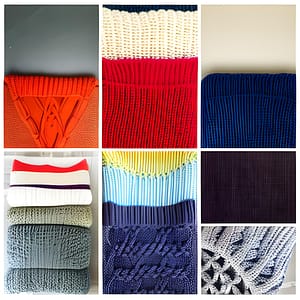Outerwear Manufacturers
The Art of Manufacturing Outerwear: Countries Known for Puffer Jackets
When it comes to manufacturing outerwear, there are a few key players in the industry that are known for producing high-quality garments. From the fabrics and trims used to the innovative technologies employed in the manufacturing process, there is a lot that goes into creating the perfect puffer jacket. In this blog post, we will explore the countries that are known for their expertise in manufacturing outerwear, as well as the materials and techniques they use to create these coveted garments.
An Overview of Outerwear Manufacturing
Crafting outerwear entails a detailed process that marries design creativity with technical proficiency. The journey begins with the initial sketches and moves through stages such as pattern making, material selection, cutting, sewing, and the final embellishments that define the garment’s aesthetics and functionality. In this intricate process, a myriad of materials come into play, ranging from robust fabrics designed to weather the elements to the finer trims that add a touch of elegance or practicality.

Technological advancements have transformed traditional practices, introducing automated machinery that ensures precision and efficiency in cutting and sewing operations. Meanwhile, skilled artisans bring their invaluable expertise to aspects where human touch is irreplaceable, such as in the intricate detailing or in the application of unique finishes that define the brand’s signature style.
The global landscape of outerwear production showcases a rich tapestry of specialisation, with each region contributing its unique strengths. This diversity is not only a matter of geographic distinction but also a reflection of heritage techniques blending seamlessly with cutting-edge innovations.
As outerwear continues to hold a pivotal spot in fashion and function, the manufacturing process similarly evolves, striving for excellence in every stitch and seam. This sector thrives on a harmonious blend of tradition and innovation, dedicated craftsmanship, and the relentless pursuit of quality and durability in every piece produced.

The Leading Countries in Outerwear Production
In the realm of puffer jacket manufacture, a select group of nations distinguishes itself through unparalleled expertise and craftsmanship. Predominantly, China emerges as a colossal force, renowned not merely for the magnitude of its output but also for the cost-efficiency and speed of its production processes. Italy, with its storied tradition in textiles, earns accolades for the exquisite materials and artisanal quality it brings to the outerwear domain. Each Italian piece resonates with a narrative of meticulous craftsmanship and an unyielding commitment to luxury.
Venturing beyond these giants, the United States, Canada, and Japan contribute significantly to the industry’s landscape. The United States, with its innovative approach and diverse climate, caters to a wide array of outerwear needs, blending functionality with style. Canada, facing harsh winters, focuses on producing outerwear that offers supreme warmth and durability, utilising advanced materials and insulation technologies. Japan, on the other hand, stands out for its fusion of traditional aesthetics with modern technology, crafting outerwear that is both visually striking and technologically advanced.
This geographical mosaic of outerwear production not only highlights the global nature of the industry but also showcases the distinctive strengths and specialties of each contributing nation. From the efficiency and volume of China’s output to the bespoke quality of Italian craftsmanship, the outerwear manufacturing landscape is enriched by a variety of skills and traditions. As these countries continue to innovate and adapt to the changing demands of the global market, their contributions underscore the complex interplay of culture, technology, and fashion in the production of outerwear.
Deciphering the Fabrics and Trims Used in Outerwear
In the intricate realm of outerwear production, the choice of fabrics and trims is pivotal, each selected with meticulous care to balance style, comfort, and practicality. Puffer jackets, a staple of winter wardrobes, are often crafted from synthetic materials like nylon and polyester, prized for their water-resistant and durable qualities. The incorporation of down-filled fabrics or synthetic fibres for insulation is crucial in ensuring these garments provide the warmth needed during colder months.

Trims play an equally important role, serving not just as functional components but also as elements that elevate the garment’s aesthetic appeal. Zips, for instance, are chosen for their reliability and ease of use, while buttons are often selected for their visual appeal and durability. Pockets, whether zipped or buttoned, are designed for convenience, ensuring personal items can be securely carried. Additionally, adjustable cords and elasticated hems are incorporated to enhance fit and provide added insulation.
The selection process for these materials is influenced by a multitude of factors, including the intended use of the garment, prevailing fashion trends, and the unique climatic conditions of the target market. Manufacturers meticulously source materials that not only meet the technical requirements of the garment but also align with the brand’s ethos, be it luxury, sustainability, or innovation.
As global awareness and preference for sustainable fashion grow, the industry sees a shift towards eco-friendly materials and processes. Recycled polyester and responsibly sourced down are becoming more common, reflecting a collective move towards reducing the environmental impact of outerwear production. This evolution underscores the industry’s commitment to blending style with sustainability, ensuring outerwear not only meets the aesthetic and functional needs of the consumer but also contributes to a more sustainable future.

The Role of Innovation and Technology in Outerwear Manufacturing
The arrival of innovation and technological advancements has been pivotal in transforming the outerwear manufacturing landscape. With a focus on enhancing efficiency, quality, and sustainability, the sector has witnessed a significant shift towards the integration of cutting-edge tools and methodologies. Automated cutting machines have revolutionised the initial stages of production, ensuring precision and reducing fabric wastage. Similarly, 3D printing technology is opening new vistas for customisation and intricate design possibilities, allowing for the creation of unique trims and components that were previously unattainable through conventional means.
Laser technology, too, plays a crucial role, offering unmatched accuracy in cutting and detailing, thereby enabling the production of complex patterns and designs with minimal error. The incorporation of Artificial Intelligence (AI) and robotics in sewing and assembly processes not only accelerates production times but also augments the consistency and quality of the final products.
Beyond mere production enhancements, technology is instrumental in advancing sustainable practices within the industry. Innovations such as waterless dyeing techniques and the use of recycled materials are setting new benchmarks for eco-efficiency in outerwear production. The shift towards digital and virtual sampling reduces the need for physical prototypes, diminishing the environmental footprint associated with material use and logistics.
As the industry navigates through these technological evolutions, the emphasis remains on creating outerwear that not only meets the aesthetic and functional expectations of the modern consumer but also aligns with the growing imperative for environmental stewardship.
Challenges Facing the Outerwear Manufacturing Industry
Navigating the complexities of the outerwear manufacturing landscape presents a series of formidable challenges that manufacturers must confront. A principal concern is the escalating costs associated with production, from raw materials to labour expenses, which can significantly impact profit margins. Additionally, the industry is grappling with supply chain vulnerabilities, where disruptions, exacerbated by global events, can delay production schedules and affect the timely delivery of garments to the market.

Another significant hurdle is the ever-evolving tastes and preferences of consumers, who are increasingly demanding both high-quality and sustainable outerwear options. This shift necessitates manufacturers to continually innovate and adapt their practices, often requiring substantial investment in new technologies and materials.
Moreover, the competitive pressure from fast fashion entities, which can rapidly produce outerwear at lower costs, challenges traditional manufacturers to maintain their market share without compromising on quality or ethical standards. Counterfeit products further exacerbate these challenges, undermining the integrity of established brands and eroding consumer trust.
In the face of these obstacles, manufacturers must employ strategic foresight and agility, embracing both technological advancements and sustainable practices to remain relevant and competitive in a dynamically changing industry.
The Future of Outerwear Manufacturing
Looking ahead, the trajectory of outerwear manufacturing is set to be shaped by an increasing commitment to environmentally friendly practices and cutting-edge technological advancements. Firms are earmarking resources for research and development to pioneer sustainable materials and manufacturing methods that align with a growing consumer consciousness around the impacts of fashion on the planet. Innovations in fabric recycling, down alternatives, and low-impact production techniques are heralding a new era where fashion and function do not come at the expense of the environment.
The digitalisation of design and production processes also promises to streamline operations, from the initial concept to the final product, enhancing both efficiency and customisation capabilities. With the adoption of 3D modelling and AI, the industry is moving towards a model that reduces waste and increases the speed to market, enabling manufacturers to respond more swiftly to market trends and consumer preferences.
Moreover, the focus is not solely on the production process but extends to the entire lifecycle of the garment, encouraging the development of products with greater durability and timeless appeal. This shift towards quality over quantity is anticipated to redefine consumer habits, steering them away from fast fashion towards more sustainable choices.
As outerwear manufacturers navigate these advancements, they are poised to redefine the landscape of fashion, blending tradition with innovation to craft garments that meet the ethical, aesthetic, and functional demands of the modern consumer.
FAQ’s
Related Latest Blogs

From Classic to Quirky: A Guide to Different Types of Hoodies

Wrap Yourself in Comfort: A Stylish Guide to the Different Types of Sweaters
